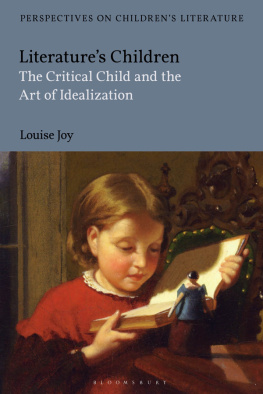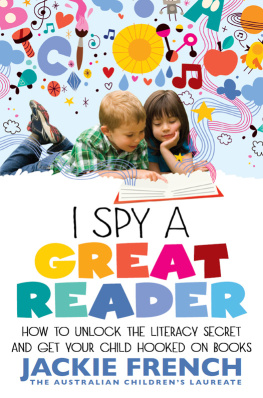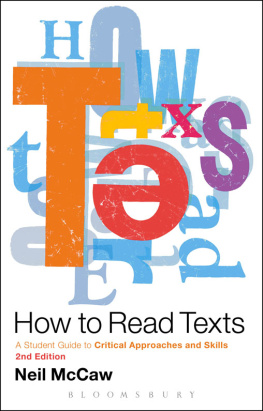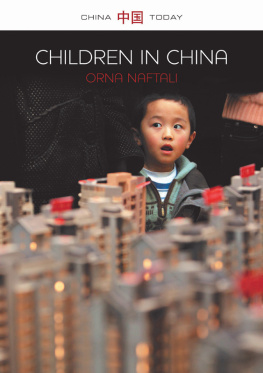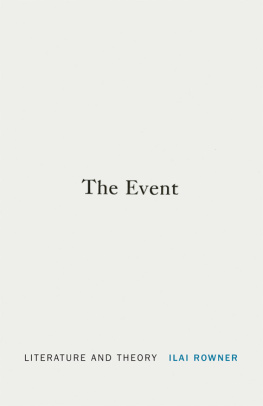
Literatures Children
Bloomsbury Perspectives on Childrens Literature
Bloomsbury Perspectives on Childrens Literature seeks to expand the range and quality of research in childrens literature through publishing innovative monographs by leading and rising scholars in the field. With an emphasis on cross- and inter-disciplinary studies, this series takes literary approaches as a starting point, drawing on the particular capacity for childrens literature to open out into other disciplines.
Series Editor
Dr Lisa Sainsbury, Director of the National Centre for Research in Childrens Literature, Roehampton University, UK.
Editorial Board
Professor M. O. Grenby (Newcastle University, UK), Dr Marah Gubar (University of Pittsburgh, USA), Dr Vanessa Joosen (Tilburg University, The Netherlands).
Titles in the Series
Adulthood in Childrens Literature, Vanessa Joosen
The Courage to Imagine: The Child Hero in Childrens Literature, Roni Natov
Ethics in British Childrens Literature: Unexamined Life, Lisa Sainsbury
Fashioning Alice: The Career of Lewis Carrolls Icon, 18601901, Kiera Vaclavik
From Tongue to Text: A New Reading of Childrens Poetry, Debbie Pullinger
Literatures Children: The Critical Child and the Art of Idealisation, Louise Joy
Rereading Childhood Books: A Poetics, Alison Waller
Forthcoming Titles
Metaphysics of Childrens Literature: Climbing Fuzzy Mountains, Lisa Sainsbury
The Styles of Childrens Literature: A Century of Change, Peter Hunt

Contents
Work for this book was made possible by support from the Cambridge Centre for Research in the Arts, Social Sciences and Humanities; from Homerton College, University of Cambridge; and from the Friends of the Princeton University Library.
I am immensely fortunate to have so many people at Homerton College and in the Cambridge English Faculty on whom I can count for support, both practical and moral, and for stimulating intellectual exchange. For their advice, encouragement and collegiality over the years, I would like to thank Penny Barton, Pete de Bolla, David Clifford, Bill Foster, Pam Hirsch, Mary Jacobus, Matthew Moss, Kate Pretty, Corinna Russell, Geoff Ward and Steve Watts. I would especially like to thank David Whitley, who has been a source of exceptional kindness and wisdom, and who has quietly emboldened and motivated me from the sidelines. She may not know it, but Philippa Hunt kick-started my adult return to childrens literature and indelibly shaped my thinking about children, literature and education. As this interest became more scholarly, it was fanned and given clearer direction and definition by Morag Styles and Maria Nikolajeva. I am enormously grateful to all three formidable women for their encouragement, their mentorship and for the example of their own professionalism.
Working with such passionate, driven and intellectually curious undergraduate and graduate students is a source of constant pleasure and inspiration. Notable among these are Clmentine Beauvais, Jessica Lim, Debbie Pullinger and Kate Wakely-Mulroney, in dialogue with whom I have tested out and developed my own ideas and interests and from whom I have learned, and continue to learn, so much.
The team at Bloomsbury have steered this project through with efficiency and good humour. I should like in particular to thank Lisa Sainsbury, the series editor, for her enthusiasm and for her generous and incisive remarks at every stage. She has been a critical reader in the best possible sense, and I have valued her input greatly. David Avital, Clara Herberg and Mark Richardson have been gracious and easy to work with throughout the process, and I am very grateful to them for being so patient and so helpful. Thank you, too, to Alka Kulkarni for her scrupulous copy-editing and to Angelique Neumann for steering the project through its final stages.
Earlier versions of Chapters 2 and 3 appeared in Literary Cultures of the Child (2018), edited by Andrew OMalley, and The Aesthetics of Childrens Poetry: A Study of Childrens Verse in English (2017), edited by Kate Wakely-Mulroney and Louise Joy. I am grateful to Routledge and Palgrave, respectively, for permission to reproduce portions of these. An earlier version of Chapter 4 appeared in Tim Webbs Towards a Lachrymology: Tears in Literature & Cultural History (2012). Thank you to Litteraria Pragenzia for permission to adapt this. Parts of Chapter 6 appeared in Peter Hunts collection of essays, J. R. R. Tolkien: The Hobbit and The Lord of the Rings (2013) and Chapter 7 in Childrens Literature Association Quarterly 14.1 (Spring 2016). I am grateful to Palgrave and Johns Hopkins University Press for permission to reproduce these. I am also grateful to Andrew OMalley, Peter Hunt and Tim Webb for invaluable comments on draft chapters during these early stages.
Conversations with friends have sustained me through the project. Thank you to Ruth Abbott, Ellie Birne, Georgina Evans, Sarah Haggarty, Zoe Jaques, Jane Partner, Sophie Read, Marcus Waithe, Alice Wilson and Jane Wright.
Above all, thanks to my parents, Hilary Joy and Martin Joy, from whose love and nurture it all originally stems, and my children, Zachary and Tobias Williams, whose existence puts it all in perspective. My greatest debt of gratitude is to my husband, Richard Williams, who makes it all possible. I dedicate this book to him, with love.
As Matthew Lipman has observed, children are not easily prevented from thinking (Lipman, 2003, p. 1). The existence of childrens literature testifies to the childs need to imagine and to wonder, to question and to doubt. The very diversity of such literature evidences childrens eagerness to reach beyond the same familiar mental horizons. And yet literary scholarship which concerns itself with the child reader (invariably envisaged as a monolithic category) is repeatedly drawn back to an idea that the child reader is inert: at one extreme, a passive receptacle for the adult to fill, and at the other, an impossibility. The discursive conceit of the tabula rasa the child as that which the adult desires it to be continues to loom large in childrens literature scholarship, even though the empirical validity of the idea has long been disproven. As Clmentine Beauvais has recently observed, its continued dominance is expressed most vividly in the readiness with which critics invoke Jacqueline Roses totemic thesis, even as they purportedly seek to distance themselves from it (Beauvais, 2015). The idea that the literary text manipulates the child reader to serve adult ends remains firmly entrenched, whether those ends are seen to be dictated by the desires of the author (Jackie Wullschlager), the agenda of the narrator (Barbara Wall), the aesthetic demands of the text (Perry Nodelman) or the ideologies embedded in discourse (Stephens) be they patriarchal (Lissa Paul), heteronormative (Kenneth Kidd) or occidental (Roderick McGillis). This hermeneutics of suspicion reaches its acme in oft-cited works by Jacqueline Rose and James Kincaid which identify the power dynamics at operation in childrens literature as mechanisms for the subjugation of the child, but it is also present in more dilute form in a notion such as Peter Hunts, that the realisation of a text, and especially of a text for children, is closely involved with questions of control, and of the techniques through which power is exercised over, or shared with, the reader (Hunt 1988, p. 163), and discernible too in notions such as Jack Zipess Marxist conviction that [a]t the same time as the child reads and views signs, he or she is being configured by the material conditions of a particular social class, ethnic group, region, and genetic background within a particular field of childrens literature production (Zipes, 2009, p. 6).
Next page
